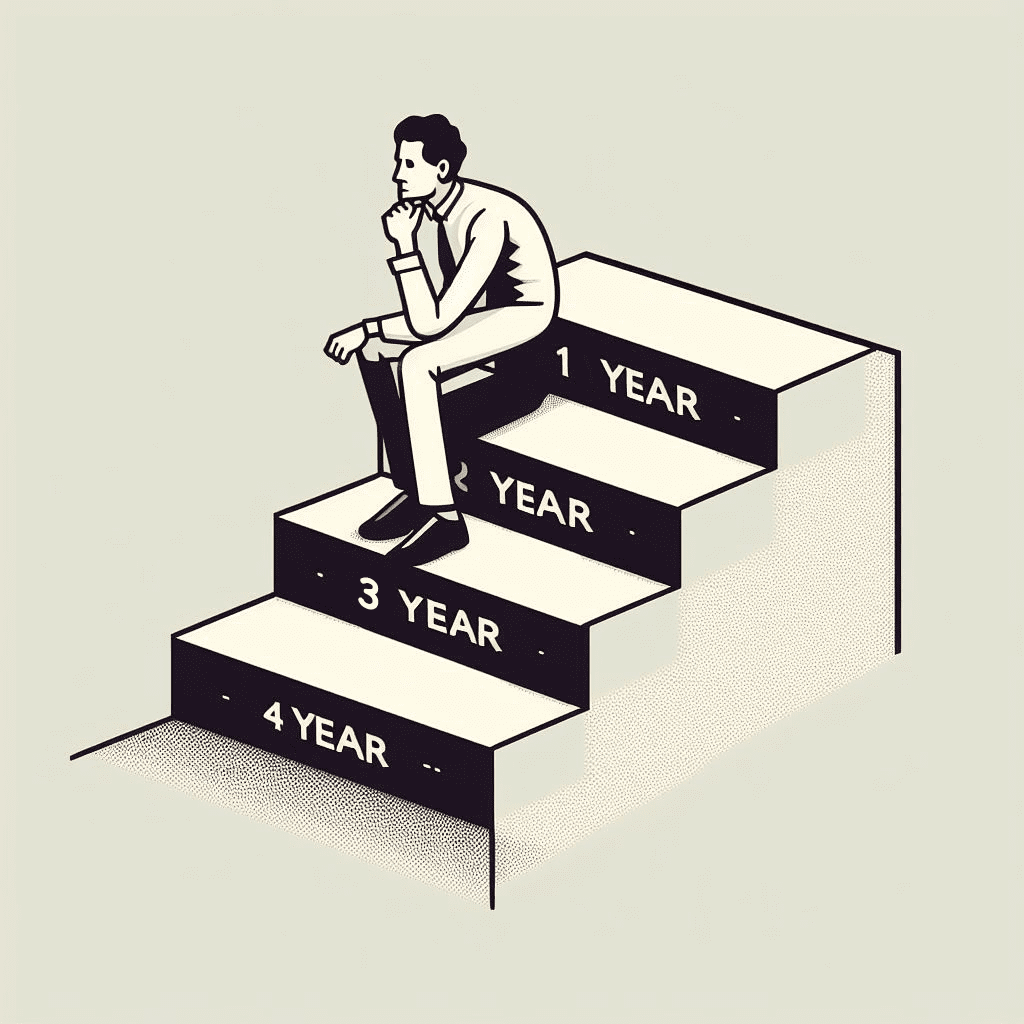5 Crucial Tips for Effective Portfolio Diversification in Day Trading
5 Crucial Tips for Effective Portfolio Diversification in Day Trading
By Shane Neagle

Can your day trading strategy withstand the market’s unexpected twists and turns?” This pivotal question underscores the essence of successful day trading, where diversification is more than a strategy; it’s the cornerstone of enduring success.
In the dynamic and intense environment of day trading, placing a strong emphasis on diversifying your investments is essential. Having a portfolio that’s diversified serves more than just as a defense mechanism against risks; it acts as a comprehensive strategy to leverage various movements in the market. Such a strategy is essential to ensure that a slump in one sector doesn’t derail your entire trading plan. It’s about creating a balance that allows you to stay agile and responsive to market fluctuations.
This exploration into strategic portfolio diversification aims to equip traders with practical insights for constructing a robust and adaptable investment array. Tailored for both seasoned traders refining their approach and newcomers charting their path, these insights are vital in navigating the complex waters of day trading. They are your toolkit for not just surviving but thriving in the ever-changing landscape of the financial markets.
Spread the Wealth Across Different Asset Classes
In the world of day trading, smartly distributing your investments across a range of asset classes is key. This isn’t just about sidestepping the dangers of investing heavily in one stock or sector. It’s about cleverly building a portfolio that can ride the waves of different market sectors.
The essence of this approach lies in the principles of Modern Portfolio Theory (MPT). MPT advocates for crafting a portfolio that finds a sweet spot between risk and potential returns. Allocating your investments among different assets such as stocks, commodities, ETFs, and REITs leads to a more robust and durable portfolio. This strategy focuses on diversifying your investments rather than putting them all in one category, providing a wider safety net across various asset types.

Branching out into global markets is also a savvy move in this strategy. It opens your portfolio to a wider array of economic conditions and opportunities, potentially cushioning it from the fluctuations of local markets. This is especially valuable in day trading, where local market swings can be quite pronounced.
It’s equally crucial to keep your portfolio manageable. Striking a balance is essential – too many investments can be as challenging as too few. A well-thought-out portfolio usually consists of about 20-30 different investments, striking a balance between diversity and manageability.
In short, by diversifying across various asset classes, including international markets, and maintaining a manageable portfolio size, you’re building a solid foundation for your day trading journey. This strategy is not just about minimizing risks; it’s about positioning yourself to tap into growth opportunities in the ever-changing financial markets.
Incorporate Index or Bond Funds for Stability
Incorporating index and fixed-income funds into a day trading portfolio offers a strategic approach to achieving stability. These funds are essential in diversifying and hedging against the often unpredictable market volatility.
Index funds act like a reflection of major market indices, like the S&P500 or NASDAQ. They offer traders an opportunity to invest in a wide segment of the market with just one fund. For day traders, this kind of broad exposure is advantageous as it lowers the risks that come with putting money into single stocks. By aligning with the broader market’s movement, index funds enable traders to participate in its overall growth, while mitigating the risks of sharp individual stock fluctuations.

Fixed-income funds, which invest in bonds and other debt instruments, add a layer of stability with their steady income potential and generally lower risk profiles compared to stocks. This consistent income stream is crucial for balancing a day trading portfolio, especially during periods of market downturns. When equities are volatile, fixed-income funds often serve as a buffer, preserving the portfolio’s value.
The cost-effectiveness of these funds is another key advantage. Typically, index and bond funds are passively managed, resulting in lower expense ratios than their actively managed counterparts. This cost efficiency means more of the investment is put to work, an important factor in day trading where every percentage point of return matters.
However, it’s important to recognize the limitations of passively managed funds. Their passive nature means they may not respond as quickly to market changes as actively managed funds. In rapidly shifting or less efficient markets, this could mean missing out on potential gains that active management might capture.
Overall, adding index and bond funds to a day trading portfolio is a wise move. They provide a balance, reducing risk through market-wide exposure and steady income, while their lower fees enhance overall investment efficiency.
Regular Investment and Dollar-Cost Averaging

Adopting a regular investment rhythm and employing dollar-cost averaging (DCA) is a smart move for day traders aiming to minimize the risks linked with market swings. This method offers a structured way to handle the often unpredictable stock market.
Dollar-cost averaging is all about investing a set amount of money into your chosen asset or portfolio at regular intervals, irrespective of its current price. This approach means you buy more shares when prices dip and fewer when they’re high, effectively balancing out your investment cost over time. For day traders, this strategy can be a game-changer as it lessens the reliance on trying to time the market and reduces the risk of making sizable investments during uncertain market conditions.
The essence of DCA lies in its regularity. By sticking to a consistent investment schedule, traders can even out the fluctuations that come with volatile markets. This tactic is especially useful in unpredictable markets, where short-term price movements can swing wildly. Regular investing encourages building up positions methodically, steering clear of hasty decisions driven by emotions.
Even in the quick-paced world of day trading, integrating DCA into a long-term strategy can bring substantial advantages. It shifts the focus from day-to-day market volatility to longer-term market trends and asset performance. This long-term view is key for a lasting trading career, aligning your investment moves with your broader financial objectives and risk appetite.
Moreover, a steady investment approach can lead to the compounding of returns over time. Reinvesting the gains from your investments can amplify your overall returns, helping to forge a stronger, more diverse portfolio.
In summary, for day traders looking to temper market risk and establish a strong investment base, regular investment and dollar-cost averaging stand out as vital strategies.
Strategic Exit Planning
Strategic exit planning is an integral part of day trading that goes beyond the usual buy-and-hold strategy. It involves making well-informed decisions about when to exit a trade, which can be as crucial as knowing when to enter. Utilizing strategic analysis to determine exit points is key to maximizing profits and minimizing losses.

One effective tool for strategic exit planning is the analysis of chart patterns. These patterns can provide valuable insights into potential exit points by indicating changes in a stock’s momentum. For instance, a ‘head and shoulders’ pattern, characterized by a peak (head) between two smaller peaks (shoulders), can suggest a reversal from a bullish to a bearish trend. Similarly, ‘double tops’ and ‘double bottoms’ patterns, where a stock price hits two consecutive highs or lows, can signal a forthcoming decline or rise, respectively. Identifying these patterns enables traders to anticipate market movements and make informed decisions about exiting their positions.
Keeping abreast of market conditions and continuously analyzing individual investments are crucial in recognizing these chart patterns and understanding their implications. This vigilance allows traders to look beyond fundamental analysis and leverage technical insights for their trading strategies.
The ability to recognize when to cut losses or take profits based on technical indicators is a vital skill in day trading. It involves understanding that not all trades will be profitable and that timely exits are essential to preserve capital and avoid significant losses. This skill also includes recognizing when a profitable trade has run its course and it’s time to capitalize on those gains.
In essence, strategic exit planning is about making data-driven decisions. It involves a careful analysis of chart patterns, staying updated on market trends, and being disciplined about when to exit a trade. By mastering these aspects, day traders can navigate the markets more effectively, transitioning smoothly to new opportunities and maintaining a healthy trading portfolio.
Monitor and Manage Commission Costs
Monitoring commission costs is a key part of a day trader’s strategy to ensure maximum profitability. While each transaction fee may appear small, they add up quickly, especially for those who engage in multiple trades daily. Understanding the full extent of what you’re paying in fees and what services your brokerage offers in return is crucial.
The cumulative effect of commissions can eat into trading profits. For a day trader, where every dollar counts, even a slight difference in commission rates can significantly impact the overall success of trading activities. It’s not just about how much you’re paying per trade; it’s about how these fees affect your total trading performance over time.

Also important is the balance between the cost of commissions and the quality of services provided by your brokerage. Some brokers might offer lower fees but may lack essential tools or support, while others might charge a bit more but provide valuable resources like sophisticated charting tools, up-to-the-minute data, and detailed research reports. Finding a broker that offers a good mix of reasonable fees and useful trading tools and resources is key.
Comparing what different brokerages offer can be very beneficial. Look for brokers that strike the right balance between cost-effective pricing and the provision of essential trading tools and support. Some brokerages offer reduced commission rates for high-volume traders, which can be advantageous. Others might offer a certain number of free trades or have a flat-fee structure.
In essence, day traders need to stay alert to commission costs and how they impact investment returns. It’s important to weigh up the brokerage fees against the services provided. Regularly assessing and comparing the offerings of different brokerages can lead you to the most cost-effective and resource-rich trading platform, ensuring your trading remains as profitable and efficient as possible.
Conclusion
In the landscape of day trading, the role of diversification cannot be overstated. It is the backbone of a successful strategy, helping to spread risk across various asset classes and markets. This, coupled with a disciplined approach to regular investment and strategic exits, transforms day trading from a high-stakes gamble to a rewarding financial endeavor. By diversifying, traders can navigate market volatility more confidently, making informed decisions that align with their long-term trading goals.
Moreover, the journey of day trading should be seen as both educational and enjoyable. Every trade offers a learning opportunity, contributing to a trader’s growth and expertise. The excitement of developing and refining strategies, analyzing market trends, and making calculated decisions is what makes day trading a unique and potentially fulfilling pursuit.
In conclusion, day trading, with its inherent risks and opportunities, requires a balanced and educated approach. Embracing diversification, regular investment, and well-planned exits are key to not just surviving but thriving in this dynamic field. As traders, adopting this comprehensive approach not only enhances profitability but also enriches the overall trading experience.
